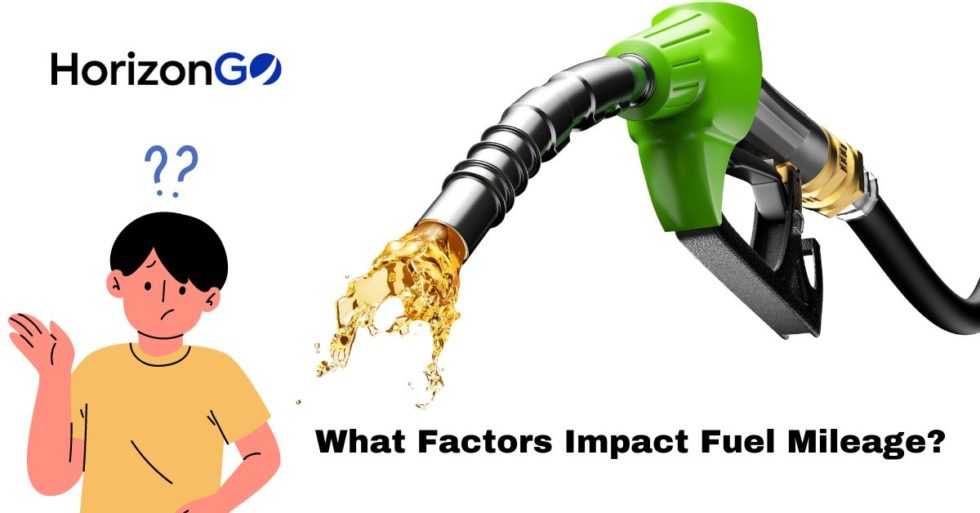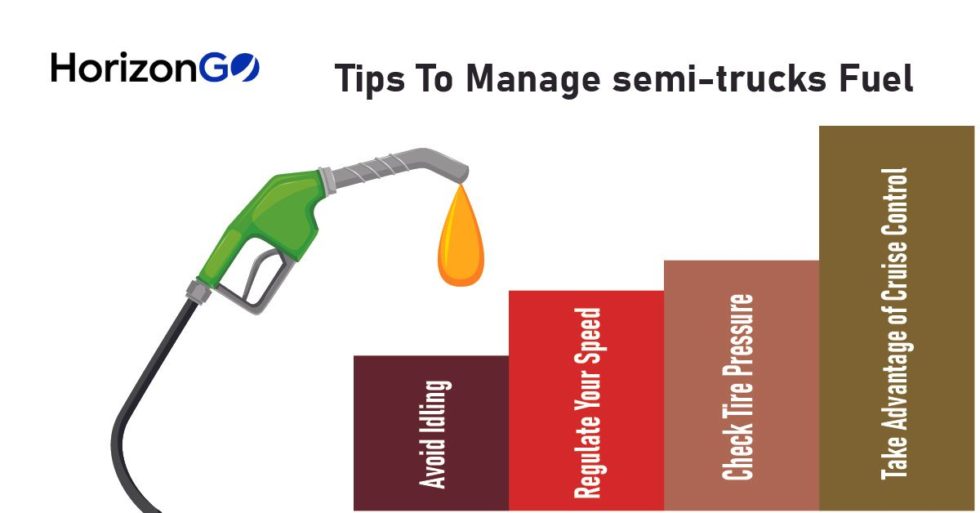- The Average Semi-Truck MPG
- What Semi-Truck Gets the Best Fuel Mileage?
- What Factors Impact Fuel Mileage?
- How You Drive
- Tips For Staying Safe With Semi Truck
- Vehicle Maintenance
- Fuel Variations
- Engine Break-in
- Truck Design
- Driver Behavior
- Regulate Your Speed
- Avoid Idling
- Take Advantage of Cruise Control
- Check Tire Pressure
What Is The Average Fuel Mileage For Semi Trucks?
In today’s era, fuel prices continue to rise; many drivers face challenges in saving money often leading to financial instability.
The average mpg of a semi truck is almost 8.5 miles per gallon (MPG) compared to an average car, which gets around 25 MPG.
However, this is a general figure that may change according to scenarios. Semi-trucks have excellent efficiency in fuel as compared to diesel, which is too expensive in the truck industry.
Additionally, the average fuel ratio also depends upon the difference in weight of semi-trucks and vehicles. According to the first law of motion, more massive objects face difficulty starting or stopping the car.
The Average Semi-Truck MPG
The average semi-truck consumes a considerable amount of fuel. Heavy truck cargo consumes more gallons of fuel than regular gallons of fuel. The average range depends upon the truck, the driver’s behavior and the truck’s condition.
According to the average ratio of trucks transporting trucks, they used fuel almost 7.1 million per gallon for semi trucks. But, semi-truck used less fuel than other cargo. So, semi trucks reduced the total average fuel.
The latest report of Geotab shares the average fuel mileage (MPG) state by state. First, discuss the top-ten highest state for average semi-truck MPG.
States Highest MPG New Hampshire 6.29 Maryland 6.29 Minnesota 6.31 Nebraska 6.31 South Carolina 6.33 Montana 6.33 Mississippi 6.34 Delaware 6.35 Wisconsin 6.35 Massachusetts 6.37 On the other hand, we will discuss the 10 lowest country MPG state by state.
States Lowest MPG Ohio – 5.9\4 5.89 Vermont 5.89 New Mexico 5.86 Michigan 5.86 Pennsylvania 5.86 California 5.85 New York 5.82 North Dakota 5.78 Washington 5.76 Texas 5.60 What Semi-Truck Gets the Best Fuel Mileage?
You can save fuel through buying the best semi truck. Many companies try to make new semi trucks every year. According to commercial traders, we discussed all the semi truck brands that save time and energy.
Semi- Truck Brands Average MPG Features Freightliner Cascadia Evolution 10 MPG 615 Horse Power Engine Aerodynamic Design Peterbilt 570 10 MPG Aerodynamic Design Kenworth T680 9 MPG Aerodynamic Design, air deflectors, mud flaps and wheel covers etc Mack Pinnacle 8 MPG Low center of gravity and mind resistance Freightliner cascadia fuel mileage: It is one of the best semi truck fuel economy.
The Freightliner Cascadia is a popular semi-truck model known for its fuel efficiency. The average fuel economy for the Freightliner Cascadia is around 6.5 to 7.5 miles per gallon (MPG). However, this can vary depending on the model year, engine configuration, load weight, driving conditions, and maintenance practices.
What Factors Impact Fuel Mileage?

Many factors affect the fuel economy, such as aggressive driving ( traffic offensive danger to other people). May lower your gas mileage to 15% to 30% at highway speed and 10% to 40% go and stop traffic.
How You Drive
Driving at high speed may increase aerodynamic drag and increase acceleration. Due to high pressure, you will forcefully drive semi trucks, which causes high fuel economy. Also, the weight of the vehicle depends upon fuel economy.
Tips For Staying Safe With Semi Truck
Vehicle Maintenance
Vehicle maintenance is essential during starting your journey for any inconveniences. Please make a checklist for the vehicle; before beginning the trip, ensure this checklist is clear.
So, all this maintenance is essential for starting any journey. All these things are important during long driving through a semi-truck.
Fuel Variations
When you hear about Fuel, you must check the variations of each power. Each energy has different functions. You must choose the Fuel according to your semi-truck engine. What type of Fuel is it, and its specification?
All of these oils have specifications and different functions for engines. First, know what type of engine you have, then choose the oil according to your engine.
Engine Break-in
Breaking in an engine is a crucial step in ensuring long-term performance and reliability. During this phase, which usually lasts 1,000 to 2,000 miles, the engine components settle and adapt to each other, decreasing wear and increasing efficiency.
It’s critical to follow the manufacturer’s break-in rules, which frequently include avoiding high RPMs, adjusting operating speeds, and doing regular oil changes. Proper engine break-in can increase the engine’s lifespan and keep it running at top performance.
Truck Design
Truck design includes the aesthetic and practical features of a truck’s structure, such as its outside look, internal arrangement, and engineering for performance and efficiency.
Factors such as the truck’s primary usage, safety rules, aerodynamics, and ergonomics all impact truck design. A well-planned strategy can increase fuel efficiency, safety, and driver comfort, making it an essential part of the truck manufacturing procedure.
Driver Behavior
Driver behavior is essential for road safety and fuel efficiency. It includes a wide range of acts, such as respecting traffic regulations and using turn signals, as well as maintaining proper speeds and avoiding aggressive driving habits.
Responsible driving not only lowers the danger of an accident but also contributes to cost savings by improving fuel consumption and minimizing vehicle wear and tear. It is an essential factor in enhancing both road safety and environmental sustainability.
Tips To Manage semi-trucks Fuel

Managing a few steps for fuel efficiency which impacts on economy efficiency. The average fuel economy for trucks varies depending on the size and type of truck.
Average semi truck fuel economy: The average fuel economy for a semi-truck is around 6.5 to 7.5 miles per gallon (MPG). This can vary depending on the specific model of the truck, the weight of the load it is carrying, and driving conditions such as speed, terrain, and weather.
So. Let’s discuss all the points one by one.
Regulate Your Speed
Controlling your speed is an essential component of safe driving. Maintaining a regular and modest rate in personal and commercial vehicles increases fuel efficiency. Avoiding quick accelerations and high speeds conserves Fuel and lowers overall transportation costs.
Avoid Idling
Suppose your truck may not start due to any issues. You try to restart your vehicle within 5 minutes. Otherwise, Idle your truck. Idling trucking in one hour may destroy your Fuel by more than one gallon. Avoiding Idling is one of the tips for managing a semi-truck Fuel.
Take Advantage of Cruise Control
One of the best tips is to use cruise control because when you use cruise control, it helps you to decrease acceleration and deceleration. It would be helpful for you to manage semi truck fuel.
Check Tire Pressure
You must check tire pressure before going anywhere. If you have low tire pressure, it will take time to run your car, due to which your petrol mileage increases.
How many miles do semi trucks last?
The average lifespan of a semi-truck is around 750,000 miles. Some semi trucks have even been known to last over one million miles.
Tips for extending the lifespan of a semi-truck:
By following these tips, you can help extend the lifespan of your semi truck and save money in the long run.
Peterbilt box trucks are generally considered to be fuel-efficient for their size and class. They are equipped with powerful and efficient PACCAR engines that are designed to maximize fuel economy without sacrificing power.
Frequently Asked Question
How many gallons does a semi truck hold?
A standard semi-truck fuel tank may store 150 to 300 gallons of diesel, depending on the truck’s make and model.
How many miles do semi trucks last?
With regular maintenance, semi trucks can survive up to 1,000,000 miles or more. However, many have been retired or sold before that time.
What is the average miles per gallon for diesel trucks?
Diesel truck average miles per gallon (MPG) ranges from 6 to 8 MPG, depending on the vehicle’s size, load, and efficiency.
How many miles per gallon does a semi truck get?
Semi-trucks get 6 to 8 miles per gallon (MPG), depending on weight, design, and driving behavior.
How far can a semi go on a full tank?
A semi-truck can usually go 900 to 1,500 miles on a full tank, depending on tank capacity and fuel economy.
How many mpg does a semi get?
Semi-trucks usually achieve 6 to 8 miles per gallon (MPG), while more efficient vehicles can get up to 10 MPG.
Conclusion
So, finally we find a solution of “ What is the average fuel mileage for a semi truck? Mostly, Semi-trucks typically get around 8.5 miles per gallon. The 18 wheeler Per MPG most fuel-efficient versions, such as the Freightliner Cascadia Evolution and Peterbilt 570, can get up to 10 miles per gallon.
Fuel mileage is affected by driver behavior, maintenance, and truck design. Drivers should focus on speed management, minimizing idling, using cruise control, and maintaining tire pressure to conserve gasoline and increase economy.